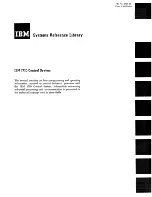
4/2021
LUMA 100
7
3.2.5
Packet transmit mode
The packet transmit mode specifies the packet-level redundancy used to increase robustness of
the link.
Normal:
No packet-level redundancy is used (default).
4.1 redundant:
adds a 5
th
packet for every 4 packets for redundancy and error
correction.
Dynamic retransmission:
The modem continues to send packets to use the full available
optical bandwidth for the period of time specified in
3.2.3 Data wait time
.
3.2.6
Beacon period
The beacon period is the time between beacon messages, that are used to instruct the receiver
not to go to sleep. Beacon messages are used to keep the receiving modems awake.
3.2.7
Auto off delay
If no beacon messages have been received for the time period specified in “Auto off delay”, the
modem enters a low-power sleep mode, with an average power consumption of less than 5
mW.
3.3
Sleep mode configuration example:
Using
LumaConf
, configure two modems as follows:
on the modem A that should enter sleep (e.g. a modem installed on a sensor), change
"auto off delay" to 30 seconds (see 3.2.7).
on the modem B that wakes up the other modem (e.g. on an ROV), change "beacon
period" to 2 seconds (see 3.2.6).
After changing settings, click "Refresh" to verify that the modem received the correct value.
Click "Save" to store the new value permanently in the modem’s internal flash. Then click
"Active mode" to leave config mode and put the modem into normal operation.
If modem A doesn't receive any beacon messages for 30 seconds, it will go to sleep. Current
consumption is then approximately 5 mW. When it receives the beacon messages from modem
B, it will wake up. As long as it keeps receiving "beacon" messages, it will stay awake.
Note that strobing lights, or other sources of pulsed light interference, may also temporarily
wake the modem up. It will keep listening for beacon messages to fully wake up and go back to
sleep after 30 seconds. In rare circumstances, this could be an issue, e.g. if the modem is stored
under a flickering light for extended periods, as it will be woken up continuously as soon as it
goes to sleep. The current consumption in this case would be around 25-30 mA, until the
interference source is removed.






























